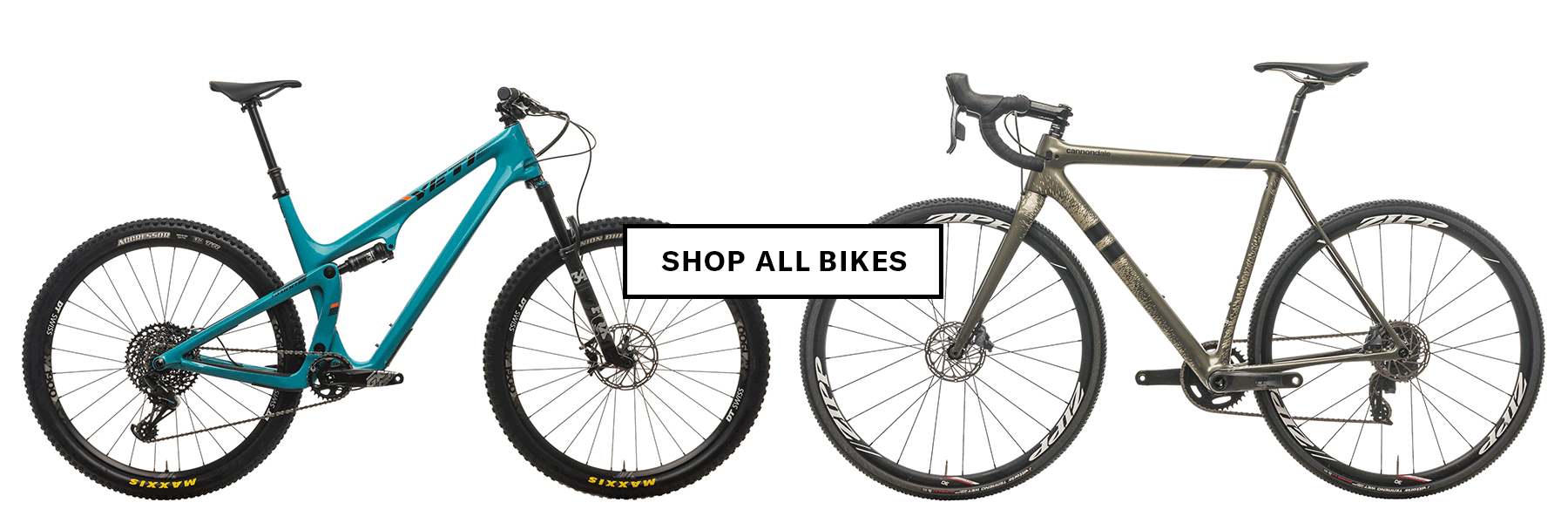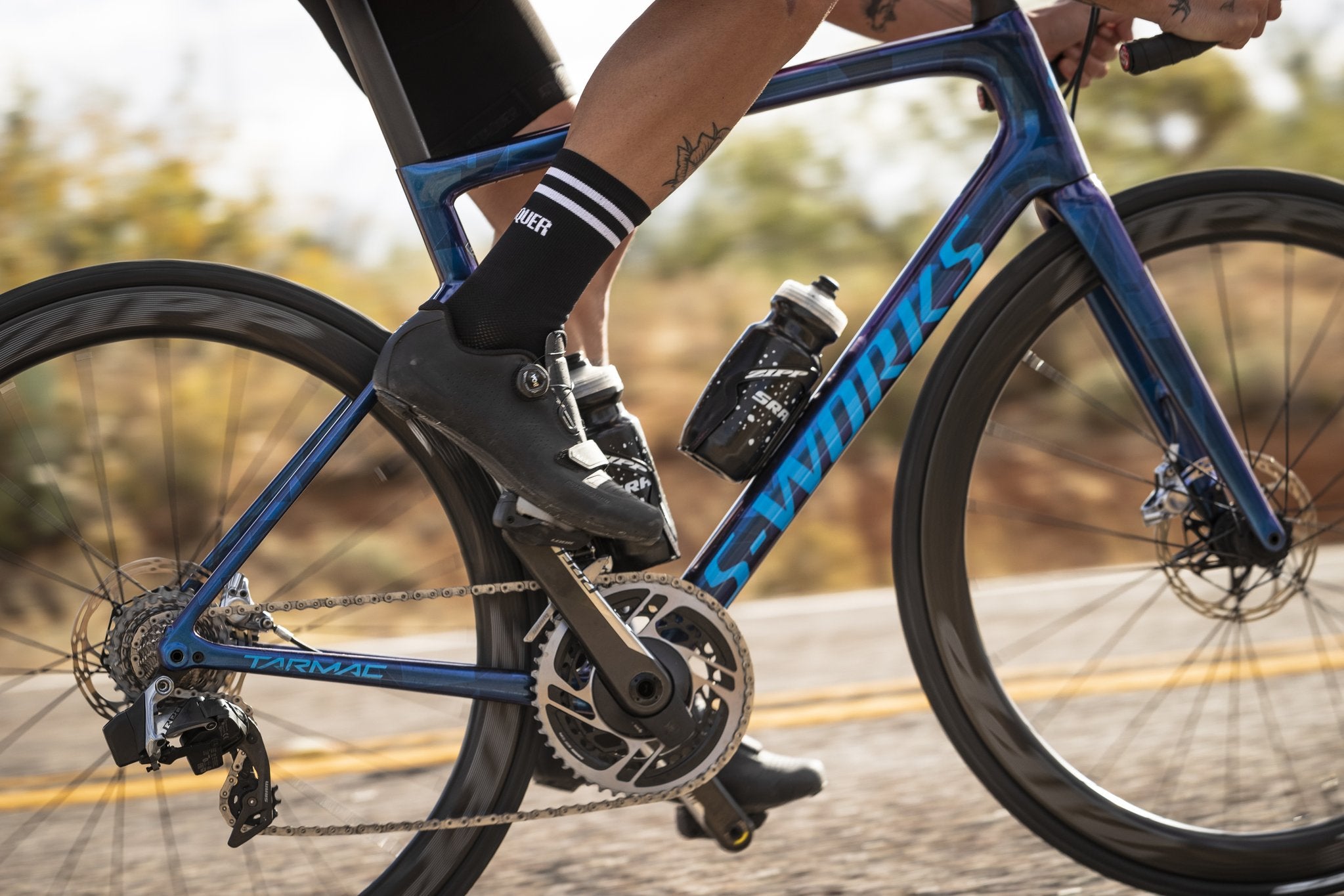 SRAM Red eTap AXS on the road | Photo: Chris Milliman
SRAM Red eTap AXS on the road | Photo: Chris Milliman
We may soon witness the death of the mechanical drivetrain. Electronic shifting has become refined and reliable. Electronic drivetrains are used throughout the pro peloton and increasingly available on new bikes.
Maybe you’ve learned all about the advantages of electronic shifting or you’re just a gear geek who wants to stay current. Either way, there’s good reason to ditch the cables on your next bike. But how do you decide between a Shimano Di2 group and a SRAM AXS drivetrain? Each has different features, pros, and cons. Here’s what you need to know.
SHOP ELECTRONIC DRIVETRAIN BIKES
Shimano Di2 vs. SRAM AXS price and weight comparison
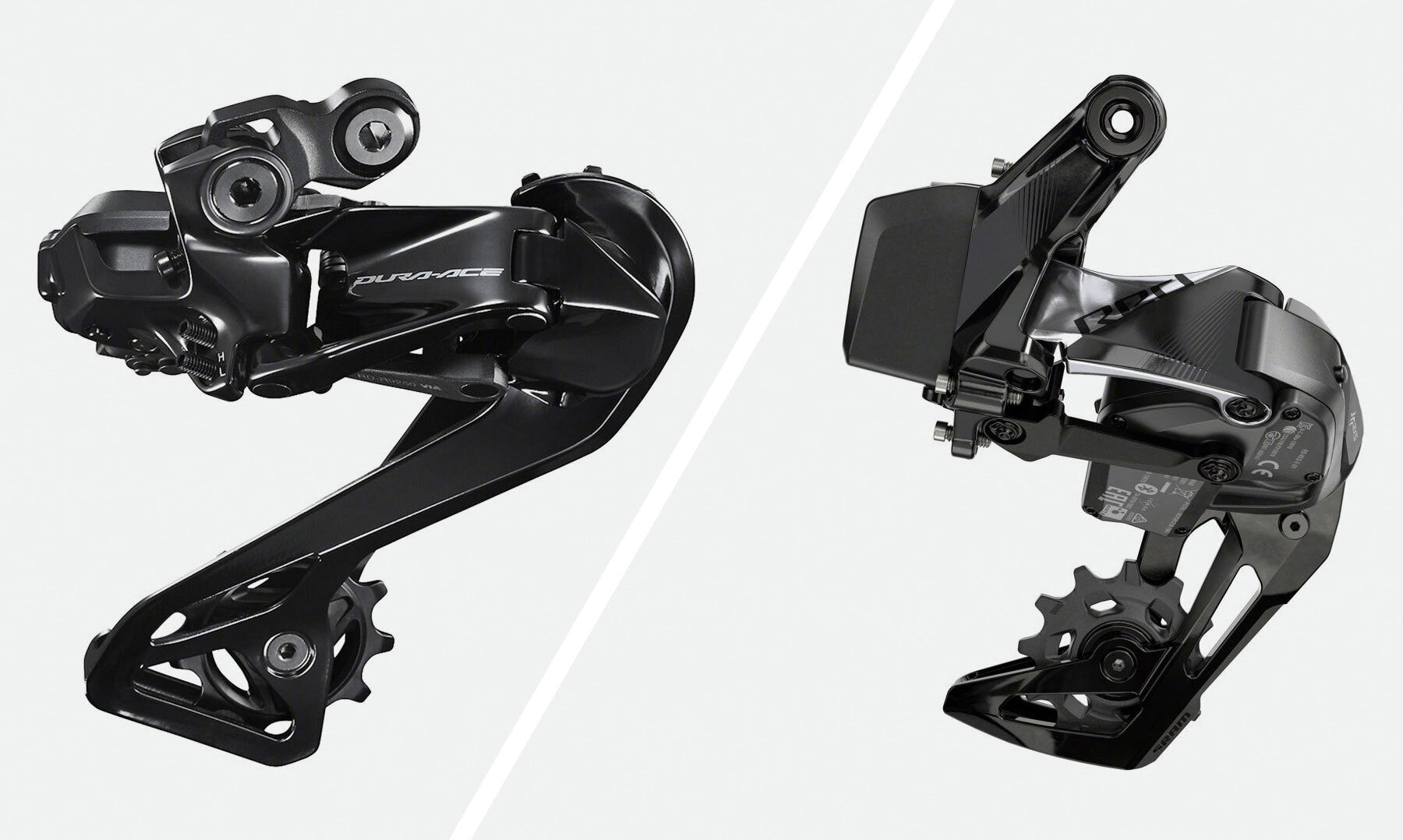 The latest and greatest: Shimano's Dura-Ace Di2 and SRAM's RED eTap AXS XPLR rear derailleurs.
The latest and greatest: Shimano's Dura-Ace Di2 and SRAM's RED eTap AXS XPLR rear derailleurs.
The tables below feature the latest hydraulic disc brake drivetrains from each brand. Prices are based on retail pricing; if you find it cheaper online, more power to ya! Weights are based on the manufacturer’s claimed weight.
These tables only compare electronic components like shifters (including brakes for road shifters), derailleurs, and batteries. Components such as cranksets and cassettes have been omitted. These tables will give you a rough idea of how much cost and weight the electronics add to a complete bike.
Road
|
Shimano |
Price |
Weight |
SRAM |
Price |
Weight |
|
Dura-Ace Di2 R9200 |
$3,038 |
947g |
RED eTap AXS |
$2,360 |
1,215g |
|
Ultegra Di2 R8100 |
$1,979 |
1,089g |
Force eTap AXS |
$1,565 |
1,324g |
|
N/A |
-- |
-- |
Rival eTap AXS |
$1,150 |
1,391g |
Gravel
|
Shimano |
Price |
Weight |
SRAM |
Price |
Weight |
|
N/A |
-- |
-- |
RED XPLR eTap AXS |
$1,960 |
1,067g |
|
GRX Di2 RX800 |
$1,342 (1x) / $1,569 (2x) |
1,133g (1x) / 1,264g (2x) |
Force XPLR eTap AXS |
$1,340 |
1,155g |
|
N/A |
-- |
-- |
Rival XPLR eTap AXS |
$975 |
1,197g |
Mountain
|
Shimano |
Price |
Weight |
SRAM |
Price |
Weight |
|
XTR Di2 M9000 |
$1,210 (1x) |
436g (1x) |
XX1 Eagle AXS |
$1,000 |
441g |
|
XT Di2 M8000 |
$689 (1x) |
505g (1x) |
X01 Eagle AXS |
$800 |
458g |
|
N/A |
-- |
-- |
GX Eagle AXS |
$600 |
522g |
Bottom line: Di2 is more expensive than its AXS competition. For road applications, Di2 is notably lighter.
SHOP ELECTRONIC DRIVETRAIN BIKES
Wires vs. wireless drivetrains
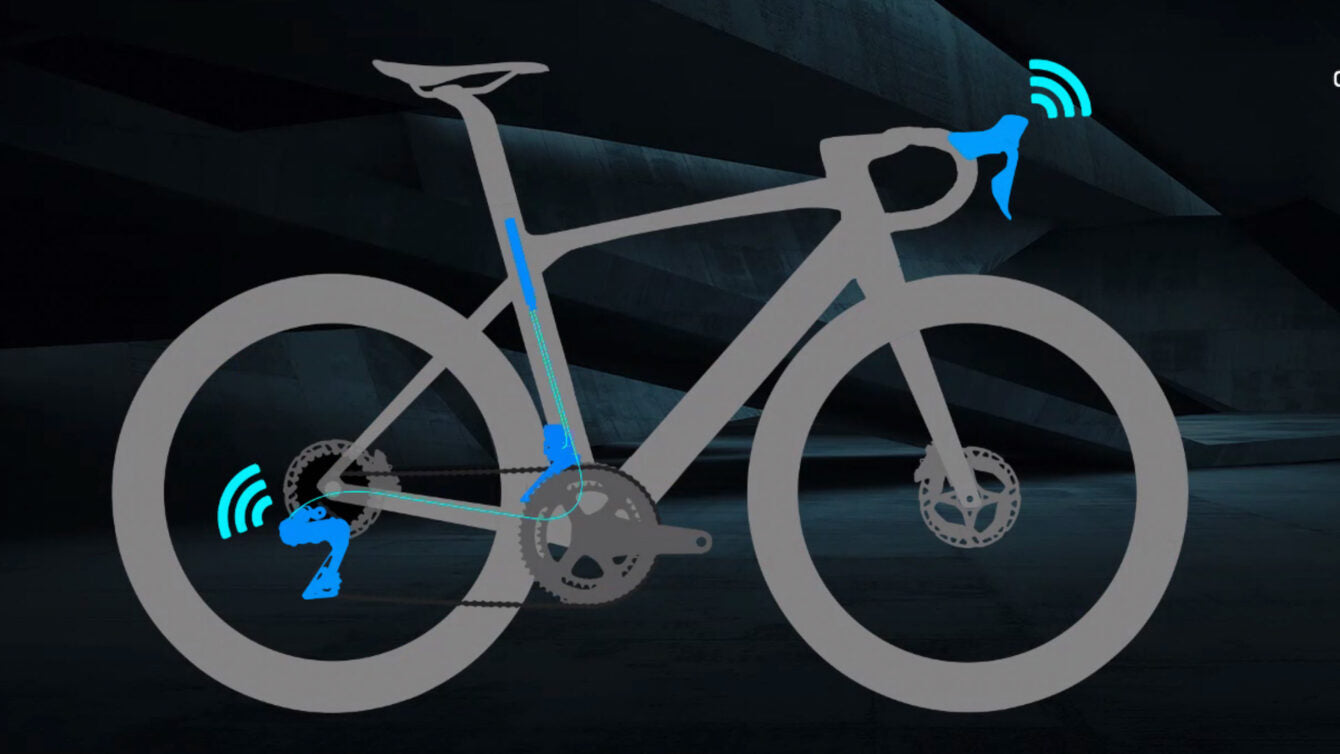 The latest generation of Di2 uses wires with easier to install wireless shifters. | Photo: Shimano
The latest generation of Di2 uses wires with easier to install wireless shifters. | Photo: Shimano
Shimano Di2 uses wires to connect the battery, shifters, and derailleurs. SRAM AXS is fully wireless. The latest Dura-Ace Di2 R9200 and Ultegra Di2 R8100 drivetrains are hybrid, using wireless shifters.
Wired advantages
- Fastest shifting, although the difference is imperceptible to most.
- A central battery that provides a longer run-time
Wired disadvantages
- Requires frame compatible with Di2 wiring.
- Installation can be difficult and time-consuming. Once installed, it’s set and forget.
Wireless advantages
- Extremely easy to install on any frame.
- Provides a clean, cable-free look.
Wireless disadvantages
- Multiple smaller batteries (one per derailleur) that require recharging more often.
- Bulkier derailleurs due to the battery.
Bottom line: Both shift quickly and reliably. Once set up, both are very easy to live with. If upgrading an older bike, AXS will be easier to install for most home mechanics.
Batteries and charging
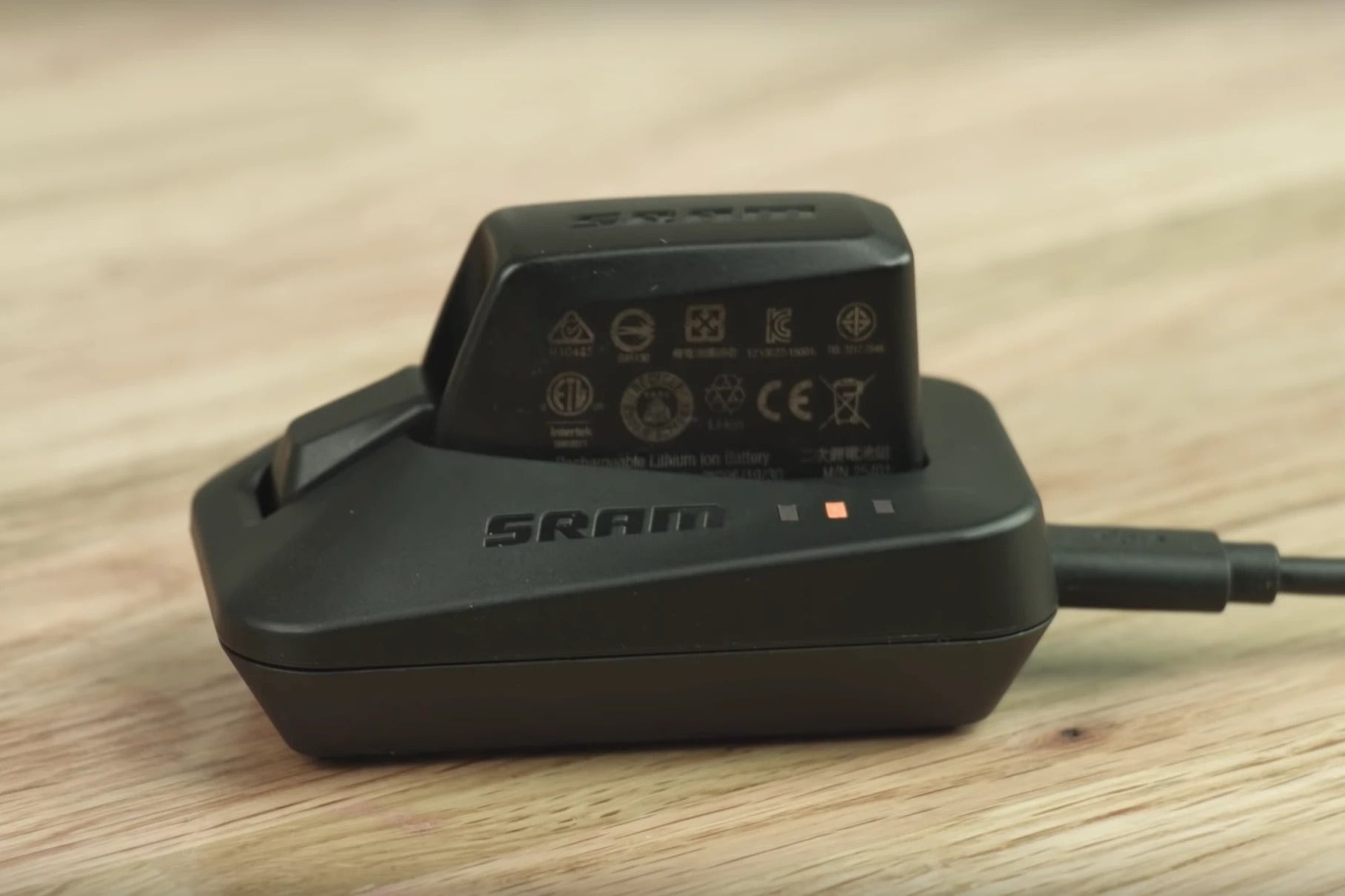 The SRAM AXS battery in a recharging cradle. | Photo: SRAM
The SRAM AXS battery in a recharging cradle. | Photo: SRAM
Shimano Di2 battery life: at least 1,000km (621mi)
- In practice, an average cyclist that rides three to five times a week will only need to charge their Di2 bike about four times a year. Full charge in about 1.5 hours.
SRAM AXS battery life: approximately 60 hours of ride time
- AXS batteries take an hour to fully recharge. Because the batteries only weigh 25g, it’s possible to carry a spare. You can swap batteries between the front and rear derailleurs or an AXS dropper seatpost if one dies.
Bottom line: The two brands use different metrics to measure battery life so it’s hard to compare them. What’s more important is which battery style you prefer.
Shift customization
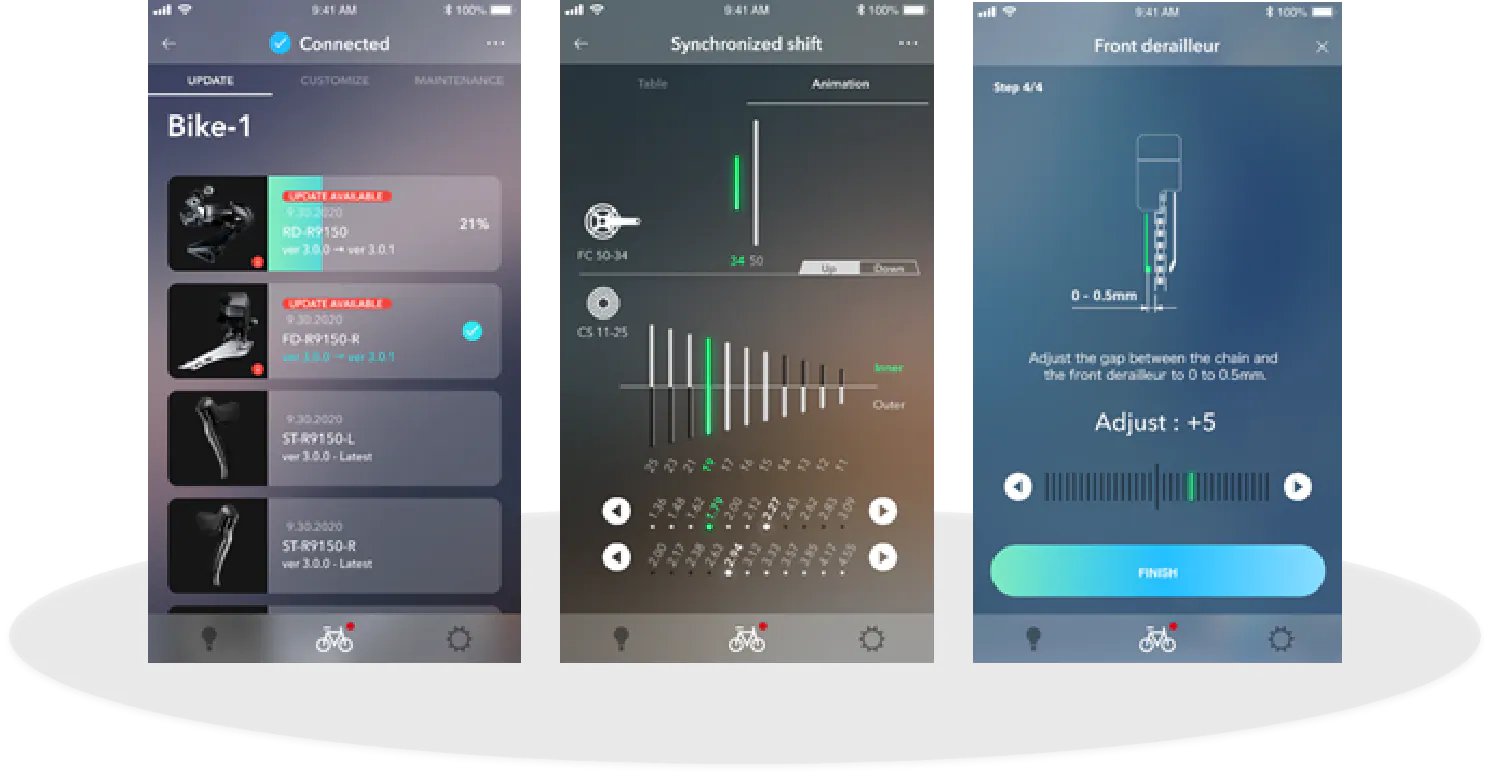 Make adjustments with the Shimano E-Tube Project app. | Photo: Shimano
Make adjustments with the Shimano E-Tube Project app. | Photo: Shimano
Both Di2 and AXS allow the addition of small accessory “sprint shifters,” “climbing switch shifters,” or “blips.” Both Di2 and AXS can connect to a smartphone app to customize shift preferences like Synchro (Shimano) or Sequential (SRAM) shifting or Semi Synchro (Shimano) or Compensating (SRAM) modes.
Bottom line: It’s a tie.
Gearing and speeds
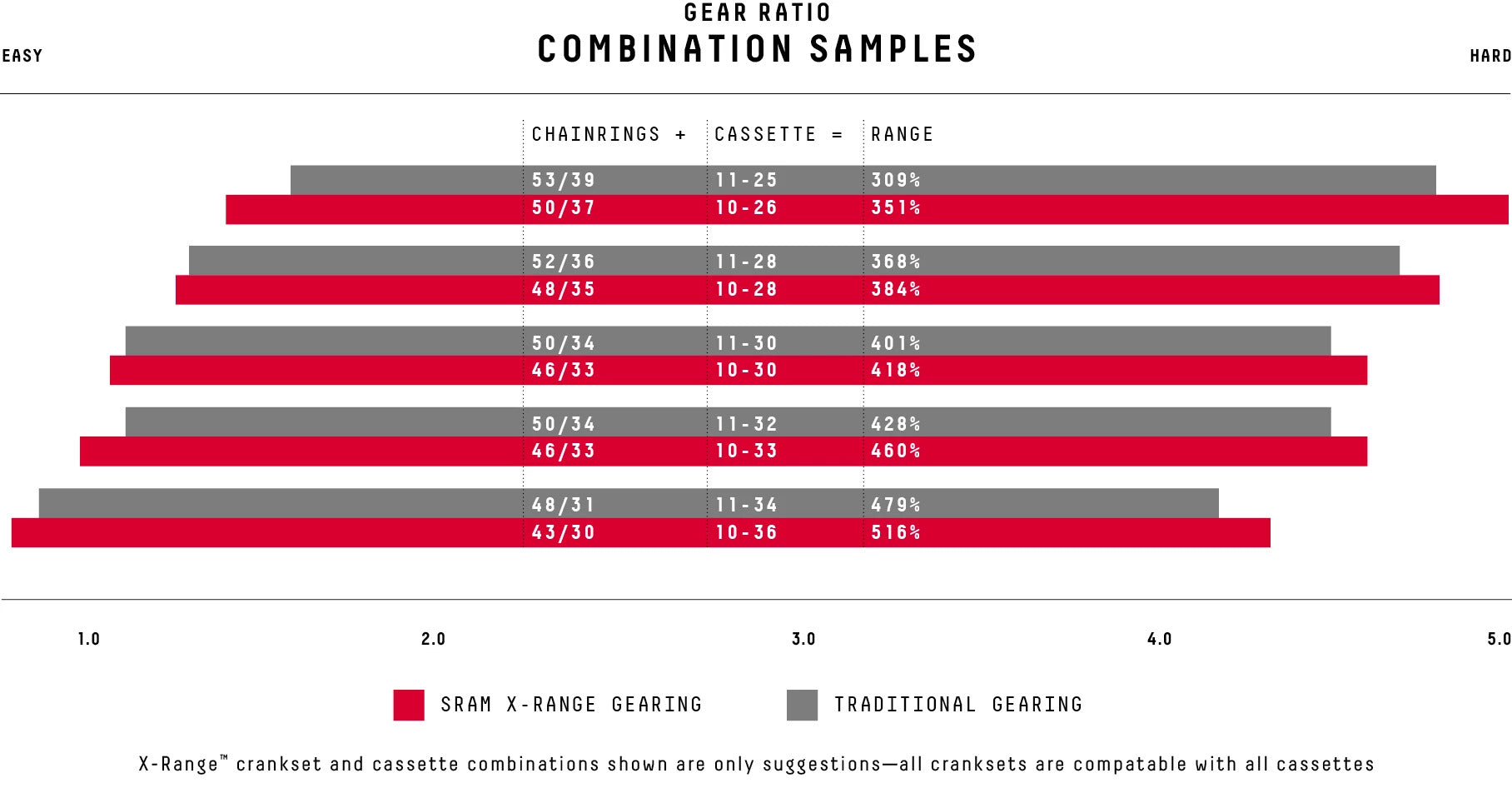 X-Range vs. traditional gearing. | Photo: SRAM
X-Range vs. traditional gearing. | Photo: SRAM
12-speed Shimano Di2 road drivetrains offer “standard” gear range that most experienced cyclists will already know. SRAM’s AXS road groups have switched to “X-Range” gearing with smaller chainring sizes and wide-range cassettes. For road, AXS X-Range provides the easiest low gear (43/30t chainrings + 10-36t cassette vs. 50/34t chainring + 11-34t cassette).
Shimano’s GRX Di2 gravel drivetrain is currently 11-speed and can be run as a 2x or 1x. SRAM’s gravel-specific XPLR drivetrains are now 1x only with a 12-speed 10-44t cassette. Gearing depends on chainring selection, usually 40-44t.
Shimano does not offer a 12-speed Di2 mountain bike drivetrain using its wide-range 10-51t cassette. Its widest range cassette is an 11-speed 11-46t. SRAM Eagle AXS mountain bike drivetrains are all 12-speed and work with 10-50t or 10-52t cassettes.
Bottom line: If you like old-school 2x go with Di2. On the MTB side, SRAM Eagle AXS has no real competition … yet.
Clutches and chain management
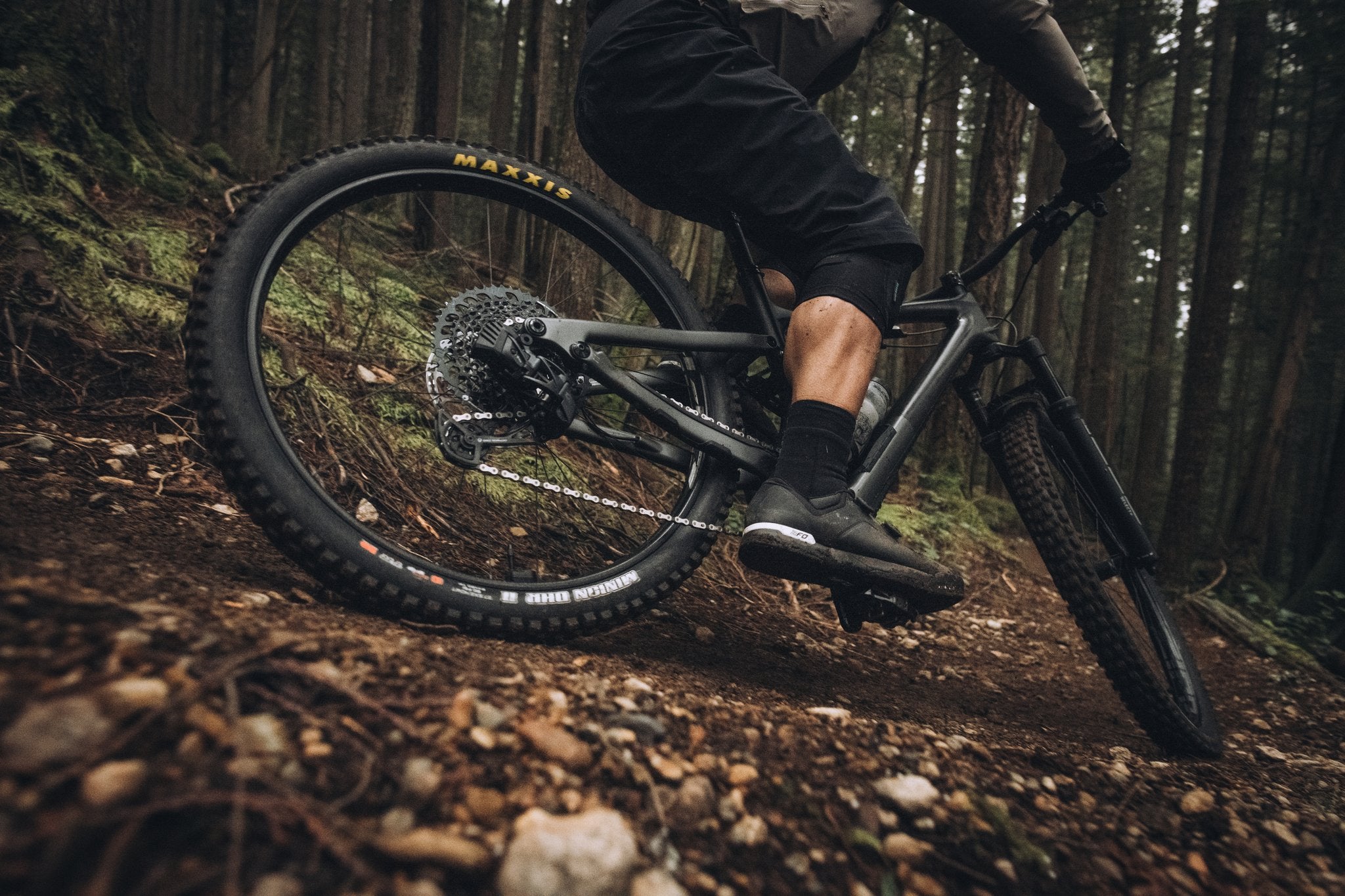 All Eagle AXS derailleurs from GX to XX1 feature the Overload Clutch. | Photo: SRAM
All Eagle AXS derailleurs from GX to XX1 feature the Overload Clutch. | Photo: SRAM
SRAM RED and Force AXS rear derailleurs use Orbit Fluid Dampers to prevent dropped chains and chain noise on rough roads. The Orbit Damper is lightweight, low friction, and speed-sensitive. The harsher the bump, the more resistance it applies to keep the chain under control. Rival AXS rear derailleurs use a more traditional mechanical clutch.
SRAM Eagle AXS mountain bike rear derailleurs use a standard roller bearing clutch but add an Overload Gearbox Clutch to protect the derailleur and motor during an impact. The Overload Gearbox Clutch disengages, giving the derailleur freedom to move and absorb the impact, saving you a hefty repair bill. It quickly reengages and the derailleur will realign itself in a split-second.
The latest generation 12-speed Shimano Dura-Ace and Ultegra Di2 drivetrains currently don’t offer a clutched derailleur option (the previous generation had the clutched Ultegra RX). The gravel-oriented GRX Di2 rear derailleur uses the same clutch mechanism as the rest of Shimano’s mountain bike derailleurs which can be toggled on or off.
Bottom line: If you ride rough roads, gravel, or trails, SRAM AXS has the latest clutch technology. Pure roadies probably won’t care, though.
SHOP ELECTRONIC DRIVETRAIN BIKES
Final thoughts
There are pros and cons to each system. Here’s what I think:
- AXS for MTB
- Di2 road for weight savings
- Di2 for battery life
- AXS for 1x simplicity/ease of install/upgrading any bike
- AXS for climbing gears
Do you like Di2 or AXS? Why do you prefer one over the other? Let me know in the comments!
